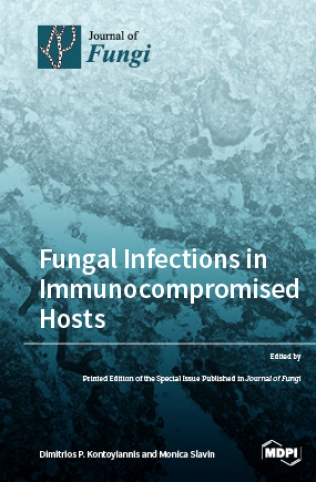Study on Enzyme Activity and Metabolomics during Culture of Liquid Spawn of Floccularia luteovirens
IF 4.2
2区 生物学
Q2 MICROBIOLOGY
引用次数: 0
Abstract
To comprehensively investigate the physiological characteristics and metabolic processes of the mycelium of Floccularia luteovirens (F. luteovirens), a wild edible fungus unique to the plateau region, we conducted an in-depth analysis of the mycelium enzyme activity and metabolites during different culture periods. The activity of seven enzymes all followed a trend of initially increasing and then decreasing. The intra- and extracellular activity peaks of three hydrolases—amylase, protease, and cellulase—all occurred on the 20th day, except for the extracellular amylase, which peaked on the 15th day. In contrast, the peak activity of laccase occurred on the 10th day. Moreover, three types of oxidoreductases in the mycelium (catalase (CAT), superoxide dismutase (SOD), and 2,3,5-triphenyltetrazolium chloride (TTC)-dehydrogenase (TTC-DH)) also exhibited significant changes in activity. CAT and SOD activity reached their maximum on the 20th day, whereas TTC-DH showed high activity on both the 10th and 20th days. Through a comprehensive assessment of the evolving trends of these physiological parameters, we determined that the optimal cultivation cycle for F. luteovirens liquid spawn is 20 days. An untargeted metabolomic analysis revealed that 3569 metabolites were detected in the F. luteovirens mycelium, including a variety of secondary metabolites and functional components, with terpenoids being particularly abundant, accounting for 148 types. By comparing three different culture stages (10 days, 20 days, and 30 days), 299, 291, and 381 metabolites, respectively, showed different accumulation patterns in the comparison groups of 10d vs. 20d, 20d vs. 30d, and 10d vs. 30d. These differential metabolites were primarily concentrated in carboxylic acids and their derivatives, fatty acyl groups, organic oxygen compounds, and lipid compounds. In addition, there were several amino acids whose abundance continued to grow during culturing. The metabolism of amino acids greatly affects mycelium growth and development. This research delineates the interplay between mycelium growth and metabolism, offering empirical support for a cultivation strategy for liquid F. luteovirens, and an exploration of its metabolites for potential applications.液态卵黄囊菌培养过程中的酶活性和代谢组学研究
为了全面研究高原地区特有的野生食用菌--鲁特菌(Floccularia luteovirens)菌丝体的生理特点和代谢过程,我们对不同培养期菌丝体酶活性和代谢产物进行了深入分析。七种酶的活性均呈先升高后降低的趋势。三种水解酶--淀粉酶、蛋白酶和纤维素酶--的胞内和胞外酶活性峰值均出现在第20天,只有胞外淀粉酶的峰值出现在第15天。相反,漆酶的活性在第 10 天达到峰值。此外,菌丝体中的三种氧化还原酶(过氧化氢酶(CAT)、超氧化物歧化酶(SOD)和 2,3,5-三苯基氯化四氮唑(TTC)-脱氢酶(TTC-DH))的活性也发生了显著变化。CAT 和 SOD 的活性在第 20 天达到最大值,而 TTC-DH 在第 10 天和第 20 天均表现出较高的活性。通过对这些生理参数变化趋势的综合评估,我们确定 F. luteovirens 液体产卵的最佳培养周期为 20 天。非靶向代谢组学分析显示,在黄叶蝇菌丝体中检测到 3569 种代谢物,包括各种次级代谢物和功能成分,其中萜类化合物尤其丰富,占 148 种。通过比较三个不同的培养阶段(10 天、20 天和 30 天),在 10 天与 20 天、20 天与 30 天、10 天与 30 天的比较组中,分别有 299、291 和 381 种代谢物呈现出不同的积累模式。这些不同的代谢物主要集中在羧酸及其衍生物、脂肪酰基、有机氧化合物和脂类化合物中。此外,有几种氨基酸的丰度在培养过程中持续增长。氨基酸的新陈代谢在很大程度上影响着菌丝的生长和发育。这项研究阐明了菌丝生长与新陈代谢之间的相互作用,为液态鲁特菌的培养策略提供了经验支持,并探索了其代谢物的潜在应用。
本文章由计算机程序翻译,如有差异,请以英文原文为准。
求助全文
约1分钟内获得全文
求助全文
来源期刊

Journal of Fungi
Medicine-Microbiology (medical)
CiteScore
6.70
自引率
14.90%
发文量
1151
审稿时长
11 weeks
期刊介绍:
Journal of Fungi (ISSN 2309-608X) is an international, peer-reviewed scientific open access journal that provides an advanced forum for studies related to pathogenic fungi, fungal biology, and all other aspects of fungal research. The journal publishes reviews, regular research papers, and communications in quarterly issues. Our aim is to encourage scientists to publish their experimental and theoretical results in as much detail as possible. Therefore, there is no restriction on paper length. Full experimental details must be provided so that the results can be reproduced.
 求助内容:
求助内容: 应助结果提醒方式:
应助结果提醒方式:


